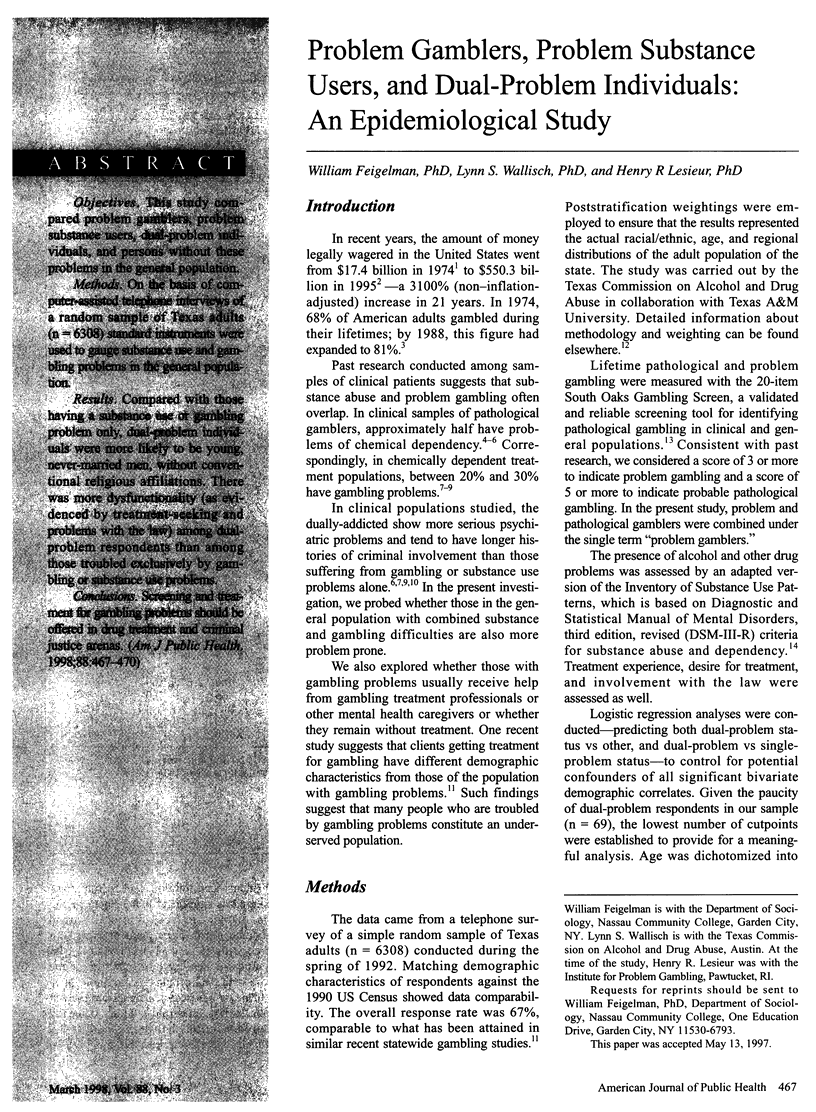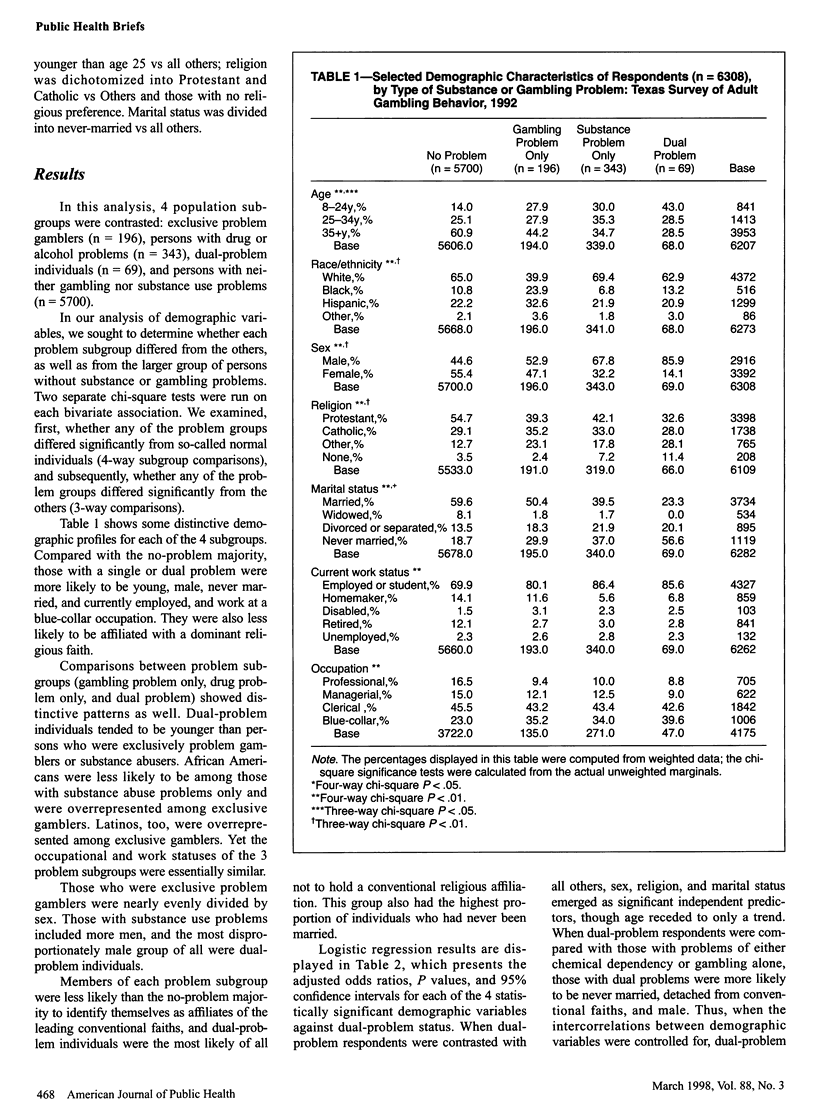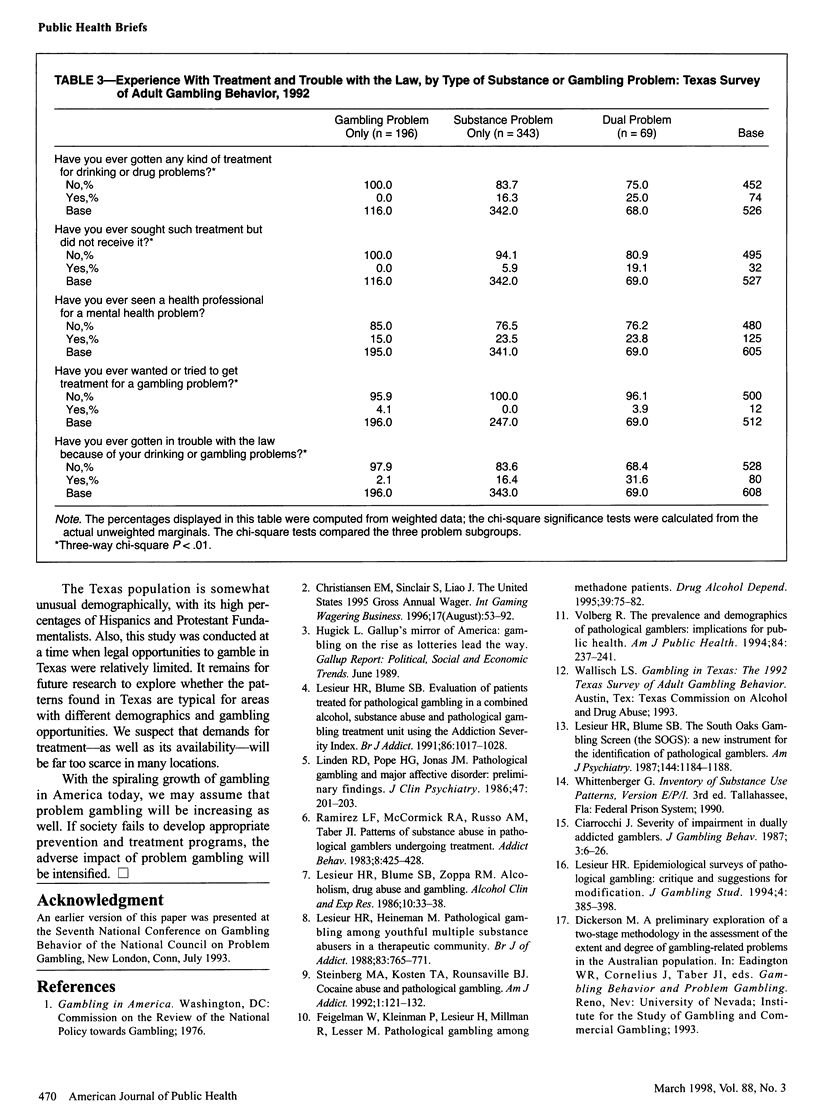Abstract
OBJECTIVES: This study compared problem gamblers, problem substance users, dual-problem individuals, and persons without these problems in the general population. METHODS: On the basis of computer-assisted telephone interviews of a random sample of Texas adults (n = 6308) standard instruments were used to gauge substance use and gambling problems in the general population. RESULTS: Compared with those having a substance use or gambling problem only, dual-problem individuals were more likely to be young, never-married men, without conventional religious affiliations. There was more dysfunctionality (as evidenced by treatment-seeking and problems with the law) among dual-problem respondents than among those troubled exclusively by gambling or substance use problems. CONCLUSIONS: Screening and treatment for gambling problems should be offered in drug treatment and criminal justice arenas.
Full text
PDF



Selected References
These references are in PubMed. This may not be the complete list of references from this article.
- Feigelman W., Kleinman P. H., Lesieur H. R., Millman R. B., Lesser M. L. Pathological gambling among methadone patients. Drug Alcohol Depend. 1995 Aug;39(2):75–81. doi: 10.1016/0376-8716(95)01141-k. [DOI] [PubMed] [Google Scholar]
- Lesieur H. R., Blume S. B. Evaluation of patients treated for pathological gambling in a combined alcohol, substance abuse and pathological gambling treatment unit using the Addiction Severity Index. Br J Addict. 1991 Aug;86(8):1017–1028. doi: 10.1111/j.1360-0443.1991.tb01863.x. [DOI] [PubMed] [Google Scholar]
- Lesieur H. R., Blume S. B. The South Oaks Gambling Screen (SOGS): a new instrument for the identification of pathological gamblers. Am J Psychiatry. 1987 Sep;144(9):1184–1188. doi: 10.1176/ajp.144.9.1184. [DOI] [PubMed] [Google Scholar]
- Lesieur H. R., Blume S. B., Zoppa R. M. Alcoholism, drug abuse, and gambling. Alcohol Clin Exp Res. 1986 Jan-Feb;10(1):33–38. doi: 10.1111/j.1530-0277.1986.tb05610.x. [DOI] [PubMed] [Google Scholar]
- Lesieur H. R., Heineman M. Pathological gambling among youthful multiple substance abusers in a therapeutic community. Br J Addict. 1988 Jul;83(7):765–771. doi: 10.1111/j.1360-0443.1988.tb00509.x. [DOI] [PubMed] [Google Scholar]
- Linden R. D., Pope H. G., Jr, Jonas J. M. Pathological gambling and major affective disorder: preliminary findings. J Clin Psychiatry. 1986 Apr;47(4):201–203. [PubMed] [Google Scholar]
- Ramirez L. F., McCormick R. A., Russo A. M., Taber J. I. Patterns of substance abuse in pathological gamblers undergoing treatment. Addict Behav. 1983;8(4):425–428. doi: 10.1016/0306-4603(83)90044-8. [DOI] [PubMed] [Google Scholar]
- Volberg R. A. The prevalence and demographics of pathological gamblers: implications for public health. Am J Public Health. 1994 Feb;84(2):237–241. doi: 10.2105/ajph.84.2.237. [DOI] [PMC free article] [PubMed] [Google Scholar]


